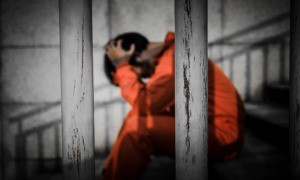A report released today by the group D.C. Lawyers for Youth challenges the widely held belief that notable spikes in juvenile offenses and arrests, particularly in urban areas, occur during the summer months.
From 2007 through 2010, weekly averages drawn from Washington, D.C.’s Metropolitan Police Department data show that overall juvenile arrests and juvenile arrests for violent crimes during summer months (June, July and August) never exceeded the average for spring months (March, April and May).
The same is true when comparing arrest averages during the academic year to those during summer break: the school year average is always higher. Arrests made by D.C. officers who work in District schools are included in the MPD arrest data; in some large cities such as Baltimore, school districts have their own police department.
MPD spokesperson Gwendolyn Grump said her department’s efforts have been successful in lowering summertime delinquency.
“Under Chief Lanier’s administration, the Metropolitan Police Department has been focused on providing positive, safe and meaningful activities for our youth during the summer,” Crump said. “We have seen positive results from our efforts. However, we remain concerned about the statistics that show that youth are becoming increasingly involved in violent crime.”
“We’re not looking to influence police behavior,” said Daniel Okonkwo, executive director of D.C. Lawyers for Youth. “What we want to do is push back on public perception.”
Okonkwo said the general public, witnesses at District Council hearings and news stories often opine that juvenile crime is rising “ ‘and it’s not even summer yet.’ Like, ‘look out, the Barbarian hoard is coming, hide your women and children.’ And if you look at what’s going on, that just isn’t the case.”
Asked for an example of such assumptions, Okonwko mentioned a story that appeared in the Washington Examiner on May 23 entitled “Teenage Crime Spiking in D.C.” The story begins:
“Juvenile arrests have skyrocketed in the District this year, and city officials are bracing for the hot Washington summer when teens have extra time on their hands.”
The article quotes Ron Moten, head of a conflict resolution group in the city called Peaceacholics, forecasting an uptick in juvenile crime during the summer of 2011, but does not quote any city or police officials.
The highest three-year averages tend to come in either spring or fall, according to the report, “Debunking Urban Legends: Data Shows Summer Heat, Vacation Have Not Led to More Youth Arrests.” Spring arrests were highest in 2007 (70.5 per week) and 2010 (77); fall arrests led the city in 2008 (81.2) and 2009 (92.5).
“It is pure ‘urban legend’ that juvenile crime increases during the summer in the District of Columbia,” the report concludes. “Thus, while arrests may rise or fall in summer 2011, data shows this will be due to factors not associated with a change in season or youth being on vacation from school.”
Click here to read the report.





























